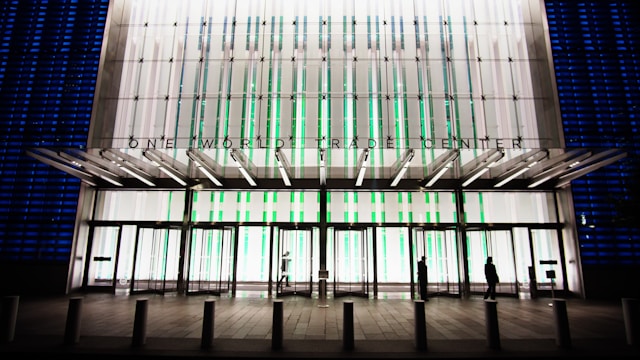Automatic doors have revolutionized how we access buildings, blending technological innovation with practical functionality. They are more than entry points; they represent a commitment to user convenience and accessibility. However, their seamless operation is predicated on rigorous and continuous maintenance, ensuring safety standards are upheld. The importance of upkeeping automated door safety compliance cannot be overstated, providing peace of mind for facility managers and safety for patrons. This article delves deeply into the practices and considerations pertinent to the service and maintenance of automatic door systems.
Key Takeaways:
- Regular maintenance is crucial for the safety and performance of automatic doors.
- Familiarity with common issues aids in timely identification and resolution.
- Professional service providers and certified technicians are essential for meeting industry standards.
- Maintenance not only ensures compliance but also represents a sound financial principle.
Table of Contents:
- The Integral Role of Automatic Doors in Infrastructure
- Technical Aspects of Automatic Door Operation
- Common Challenges in Automated Door Function
- Maintenance Protocols for Automated Doors
- Selecting Experts for Automatic Door Services
- Certification and Training of Technicians
- Technological Updates and System Upgrades
- Immediate Response to Automatic Door Malfunctions
- Compliance with Safety and Legal Provisions
- Financial Implications of Door Maintenance
The Integral Role of Automatic Doors in Infrastructure
Automatic doors are fundamental to mobility within retail, hospitality, healthcare, and multipurpose facilities. Their significance has been elevated not just by their ability to grant unhindered access to individuals with disabilities but also by their part in minimizing the transfer of germs and contaminants pertinent to maintaining public health. Installing automatic doors reflects an organization’s dedication to inclusive and innovative practices, echoing the ethos of modern architecture and design.
Technical Aspects of Automatic Door Operation
A symphony of sensors, microprocessors, and mechanical components work in concert to detect, decide, and actuate the opening and closing of automatic doors. This intricate dance of technology ensures doors respond accurately to stimuli, performing in an agile and safe manner. Understanding these moving parts, their interdependence, and their operation underlies the ability to troubleshoot problems and communicate effectively with service providers.
Detailed information can be found on the technical workings of different automatic door systems, a resource essential for anyone responsible for their upkeep.
Common Challenges in Automated Door Function
Despite their robust design, automated doors face a plethora of operational challenges. Misalignment, sensor obstruction, motor wear, and even software glitches can lead to unexpected malfunctions. Regular inspections can help spot subtle issues, such as delayed responses or unusual noises, mitigating risks before they escalate to safety hazards or costly repairs.
Maintenance Protocols for Automated Doors
A tapestry of practices exists that, when woven together, form the fabric of effective automatic door maintenance. These include but are not limited to periodic lubrication of mechanical parts, recalibration of sensors, firmware updates, and the replacement of components showing signs of wear. Establishing and adhering to a regular service schedule not only preserves the functionality of the doors but also ensures the safety and convenience of those who pass through them daily.
Selecting Experts for Automatic Door Services
Surpassing the challenges of varied door configurations and specifications, the knowledge and skill possessed by a seasoned service technician play a pivotal role in maintaining automatic doors. Selecting a service provider who demonstrates a broad understanding of different types of door systems and a commitment to continuous learning and adherence to industry benchmarks and innovations is imperative.
Certification and Training of Technicians
The certification of technicians is a testament to their proficiency and understanding of a highly specialized field. These credentials are often the result of rigorous training and an ongoing education process in a landscape that sees continual evolution. Certified technicians can offer assurance that the service and maintenance performed on automatic doors meet manufacturer specifications and industry regulations, delivering functional and compliant solutions.
Technological Updates and System Upgrades
As technology advances, the components of automatic door systems are frequently updated to enhance performance, safety, and user experience. Being abreast of these technological strides ensures that your facility can stay caught up, operating with systems that have become archaic or obsolete. Upgrades can serve as preventative measures against future problems, an investment in the long-term efficacy of the door system.
Immediate Response to Automatic Door Malfunctions
In the event of a breakdown or malfunction, the ability to act swiftly can have massive implications for traffic flow within a building. Establishing a responsive and reliable emergency service procedure that includes clear communication channels and swift technician dispatch is essential. Such preparedness minimizes operational interruptions and reinstates normality with minimal delay, preserving the integrity of the facility’s daily functions.
Compliance with Safety and Legal Provisions
Compliance is a complex mosaic of safety measures, legal standards, and ethical considerations that form the backbone of responsible facility management. Regular audits and updates of safety protocols ensure adherence to the highest safety standards and regulatory requirements and help avoid legal repercussions that could arise from negligence. While serving a protective legal function, these procedures fundamentally reflect a commitment to the welfare of all individuals interacting with automatic door systems.
Exploring maintenance strategies in depth within a broader safety context can be highly informative. The Construction Specifier touches on these themes, highlighting the significance of regular checks and the high stakes of falling short on maintenance.
Financial Implications of Door Maintenance
Venturing beyond the immediate cost of service and repairs, there is indisputable economic sense in the regular maintenance of automatic doors. It is a strategic approach that staves off significant breakdowns and the accompanying higher expenses, ensuring that systems operate at peak performance. Moreover, maintaining automatic doors in prime condition extends their lifespan—a prudent cost-avoidance tactic that ultimately enhances your return on investment.

